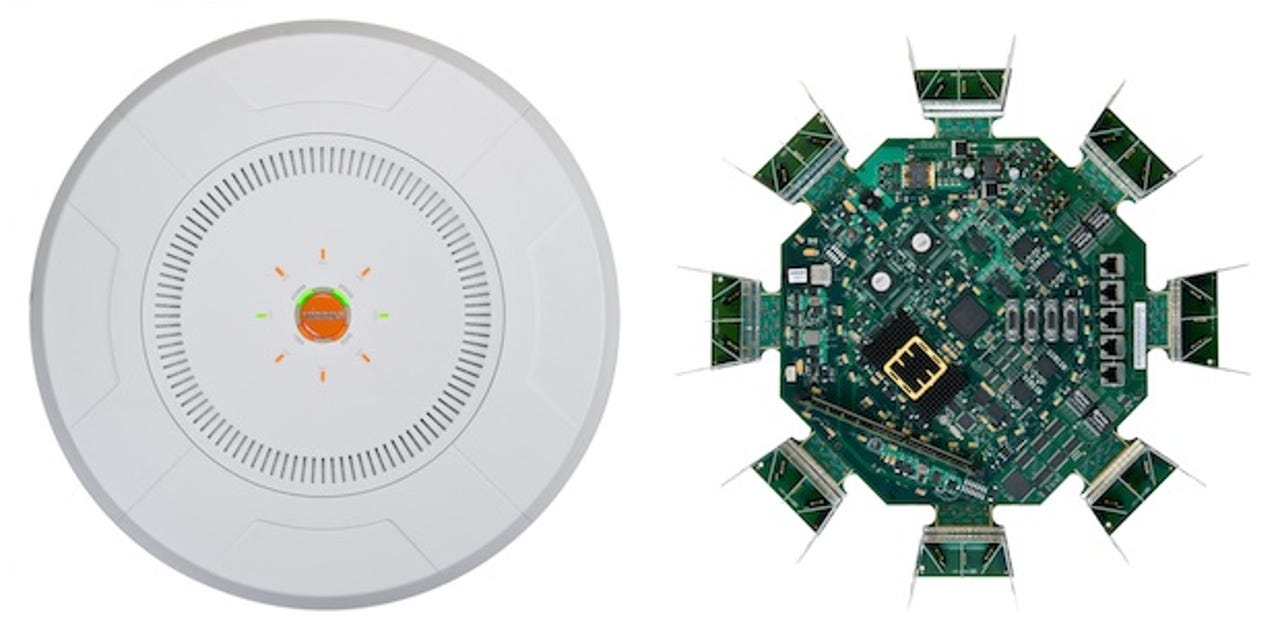Xirrus extends Wi-Fi array portfolio

These days, Wi-Fi connectivity — preferably free — is expected as a matter of course in a wide variety of environments. However, the traditional approach to widespread Wi-Fi coverage, employing multiple access points (APs) and WLAN controllers, requires an equally large number of cable runs and Ethernet ports — all of which adds to the cost and complexity of an installation. California-based Xirrus is in the business of delivering a more efficient solution, based on modular AP/WLAN controller arrays arranged in a distinctive circular chassis, using directional antennas for increased coverage.

Xirrus recently updated the design of its Wi-Fi arrays with the XR series, which made a number of improvements, including: smaller 13in. or 17in. chassis, accommodating up to 8 or 16 AP modules respectively; multi-state (2.4GHz- and 5GHz-capable) 802.11n radios that are upgradable from 300Mbps to 450Mbps; new high-gain directional antennas; and faster 4-core and 6-core CPUs. The 8-slot XR-4000 has two Gigabit Ethernet ports for backhaul, while the 16-slot XR-6000 has four; all XR arrays also include a multi-gigabit controller, a firewall and a wireless threat sensor.
The XR-4000 and XR-6000, which can support up 640 and 1,280 users respectively, are suitable for open environments with high wireless device densities, such as stadiums or conference venues.
Now Xirrus has added two smaller models aimed at more localised situations with fewer users and devices — offices, hotel rooms, hospitals, classrooms and the like. The 7in. diameter XR-1000, which supports up to 160 users, has two slots for multi-state radios and an elliptical coverage pattern that's particularly suited to corridors and adjoining rooms (in a hotel or student hall, for example). The second new product is the 4-slot, 10in. diameter XR-2000, which supports up to 320 users. Both of these lower-end arrays have a single Gigabit Ethernet port for backhaul, and — like the rest of the XR series — are, Xirrus claims, ready for the next-generation 6GHz 802.11ac and 60GHz 802.11ad standards, although few details are forthcoming at this point.
The XR-1000 and XR-2000 will be available in Q1 2012. Look out for a hands-on review of a Xirrus array on ZDNet UK in the coming weeks.